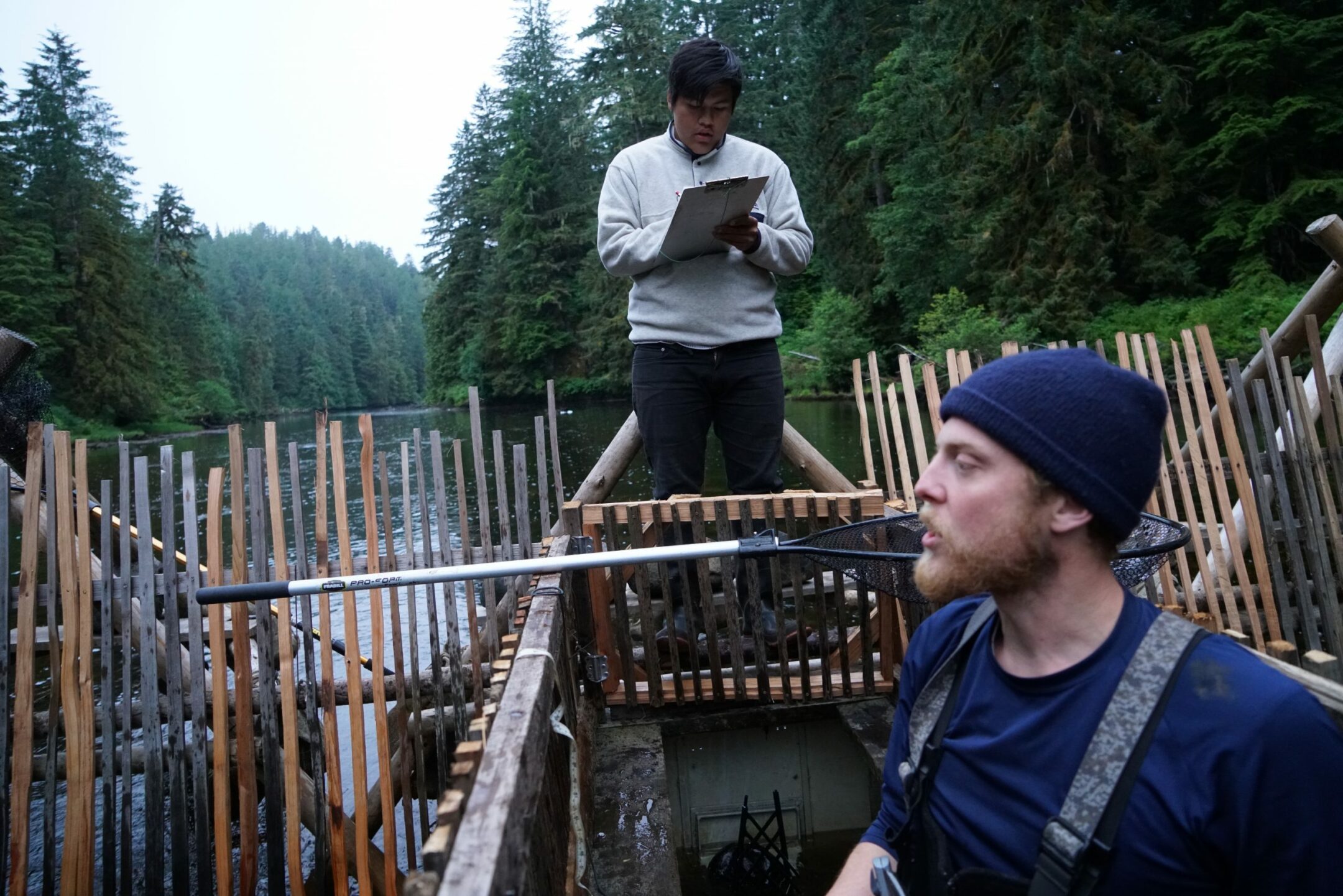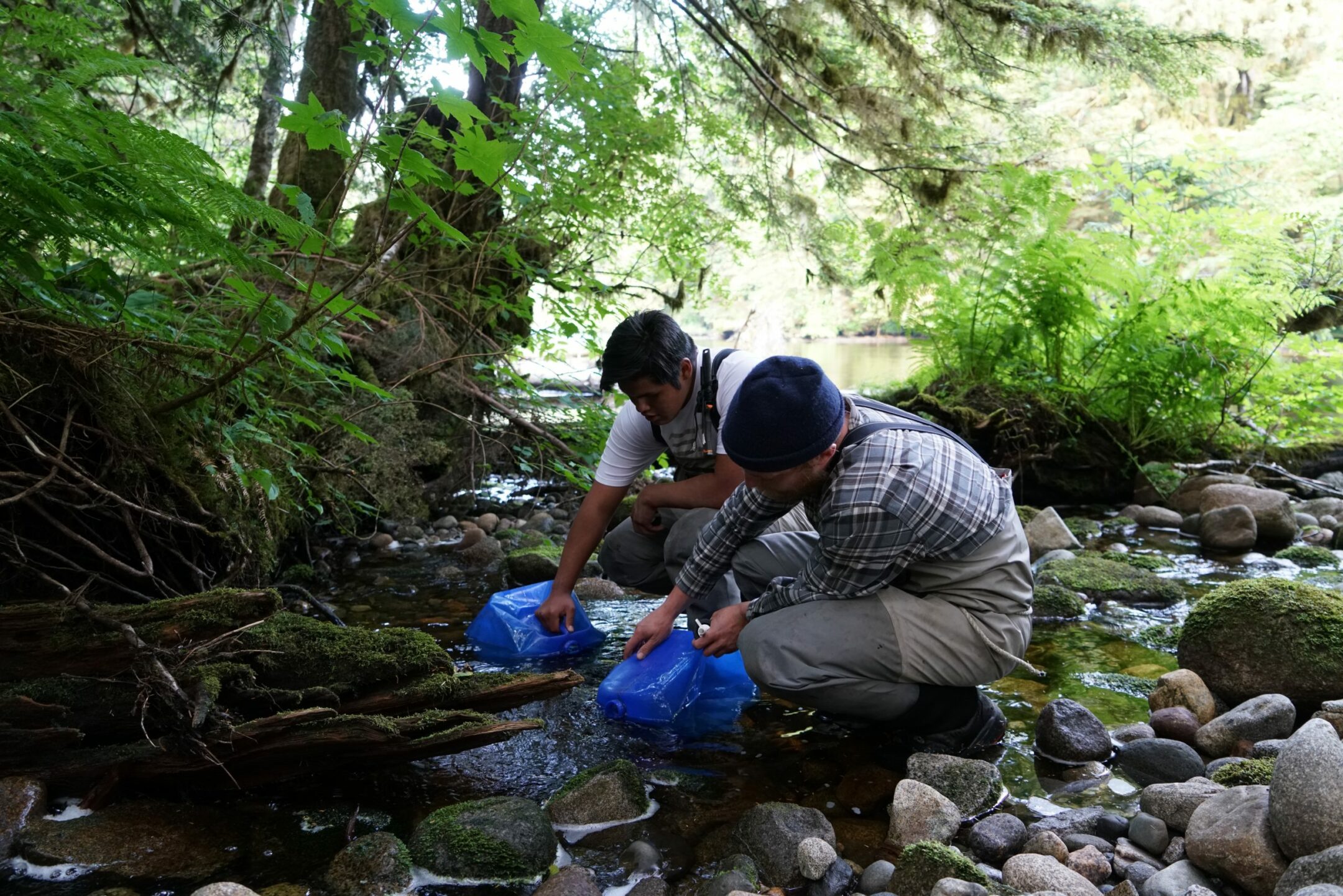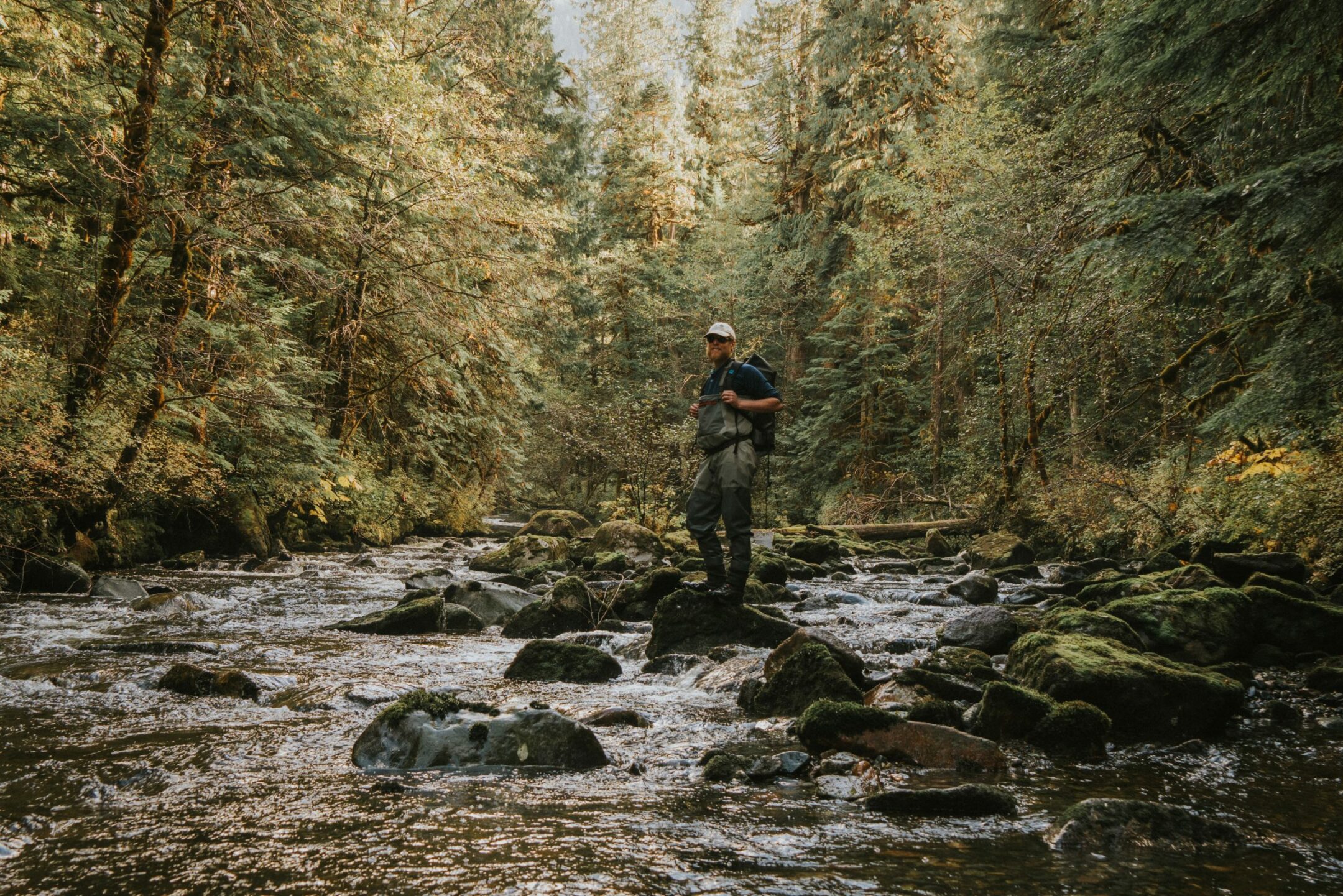Wild Salmon Center’s new salmon watershed scientist brings deep experience working at the nexus of conservation and salmon-centered communities.
As a kid, Dr. Will Atlas fly fished with his dad on family vacations in Georgian Bay, Ontario. More precisely, young Will fished. His dad, meanwhile, found a nearby rock and pulled out a paperback.

“My whole life, I’ve been obsessed with fish,” says Dr. Atlas, who joined the Wild Salmon Center team this July in the new capacity of Salmon Watershed Scientist. He laughs: “My parents, they weren’t that interested. But they’d begrudgingly come out with me.”
Dr. Atlas’s childhood passion took over at the University of Washington, where he spent maybe a third of his undergraduate waking hours fishing for salmon or trout in Skagit Valley, the Olympic Peninsula, the Deschutes. You’d also find him in Dr. Tom Quinn’s lab, doing scale study and genotyping grunt work for graduate students at ten dollars an hour, as well as churning out stories for The Osprey Blog. (For five years, Dr. Atlas edited the international salmon and steelhead conservation science journal’s online content.)
All told, it was a pretty fishy undergraduate career, Dr. Atlas admits, and that was the plan. “I imagined I’d work in salmon conservation from an advocacy perspective,” he says.
But a taste of biology field work shifted his path toward hard science. As a graduate student at Simon Fraser University, Dr. Atlas spent many months during summer and fall seasons wading through salmon rivers from California’s Eel—where he collected food web data for steelhead research—to the Koeye of British Columbia’s Coast Mountains.

“I saw how invested First Nations are in sustainable salmon management, and how science can be used to sustain and uplift practices that had been in place for millennia prior to Western contact,” says Dr. Atlas. “I realized there’s an impact to be made there.”
In the Koeye system, Dr. Atlas and SFU researchers partnered with the Heiltsuk First Nation to build a cedar-and-driftwood fish weir across the mainstem. The weir allowed the team to attach colorful visually identifiable tags (called FLOY tags) to hundreds of home-migrating sockeye. These visible markers enabled upstream observers to make mark-recapture estimates of sockeye numbers. The weir project, one of the most ambitious recent revivals of a millennia-old Indigenous fishing practice, led to press coverage, films, and published papers.
It also confirmed for Dr. Atlas that he wanted to build a career working at the nexus of salmon conservation and salmon-centered communities—amplifying, through data and research, the knowledge and insight of Indigenous communities like the Heiltsuk.
“We know that different ways of fishing do exist, and have for ten thousand years,” says Dr. Atlas. “Weirs, for example, are an original tool for salmon harvest and governance. There is a real need to shift the current paradigm of catching all our salmon in the ocean and move fisheries back into the river mouth, to more terminal and selective fisheries.”
“Will’s unique background will enrich and amplify our scientific approach to salmon conservation,” says WSC Science Director Matt Sloat.
Now, Dr. Atlas has his dream job doing just that, as Wild Salmon Center’s new Salmon Watershed Scientist. Among his first on-the-job accomplishments will be the forthcoming publication of a survey of terminal fishing techniques up and down the West Coast.
“We’re thrilled to welcome Will to the Wild Salmon Center. His unique background blends creative thinking, technical expertise, and cultural experiences that will enrich and amplify our scientific approach to salmon conservation,” says WSC Science Director Matt Sloat.

